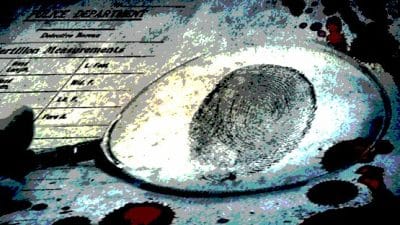
I’m nothing gaudy, devoid of charisma, a true and literal stick-in-the-mud. Yet I have inspired piracy and shooting wars, two centuries of social and environmental conflict, and libraries of legislation.
Humans have found me tasty since they resembled monkeys and profitable since the Roman Empire. On the Chesapeake Bay alone, I once engaged more than a third of all the people who fished for a living in the U.S.
I live by the same coastlines as do half of the Earth’s humans. Unable to move or hide, it’s no surprise that the reefs I built have become the world’s most endangered ecosystem or that my numbers are a miniscule fraction of what they once were.
I am Crassostrea virginica, the eastern oyster, ranging from New Brunswick to Venezuela, but nowhere more at home or more controversial than in Maryland’s Chesapeake.
Imagine that you flying-saucered from Mars down to the banks of the Choptank River on the Bay’s Eastern Shore, and Earthlings sought your wise counsel:
“We got this critter, and 98% of its original numbers gone. The best science says its ability to filter and cleanse the water, and provide habitat for all manner of other species, makes its restoration critical for the Bay’s health.… Sooooo, how many more can we catch? Oh, and catching requires busting up their reefs, which is what makes ’em such valuable habitat.”
Before you could scream “Stop!” you’d learn that you were not on Mars anymore.
Oysters and oystering are embedded in the culture, the economy, the politics, the history — a Chesapeake iconography just short of religion.
So how ridiculous is it to think we might have our remnants of the magnificent, historic oyster “cake” and eat it, too? Maryland in the last decade or so has decided to give it a notable try.
No place on Earth is mounting a more diverse and ambitious effort to support natural oyster reefs in sanctuaries while also promoting aquaculture — oyster farming — which is where most of the rest of the world’s oysters already come from, all while working with watermen to continue catching oysters from public bottoms on a sustainable basis.
The above is the premise of the latest Bay Journal film, A Passion for Oysters, to be released this fall. With the filmmaking team of Dave Harp, Sandy Cannon Brown and Richard Anderson, I’m focusing on the lower Choptank River, which mirrors Maryland’s Baywide oyster picture — with its oyster farms, free-range watermen, the world’s biggest oyster sanctuaries and a robust presence of science and environmentalists.
The film looks less at any specific issue than at what has kept this humble shellfish such an enduring source of controversy. A bit unexpectedly, given the depleted state of oysters, our research to date has left us minimally optimistic.
For example, we’ve finally begun doing the science necessary to manage any Bay fishery — necessary also to break out of the cycle of endless finger pointing about overfishing and regulation.
Put simply, you can’t manage something if you can’t count how many there are. We’ve done that with blue crabs and rockfish, and both are now managed for sustainability (not without hiccups as climate rapidly changes the Bay environment).
With oysters, Maryland hadn’t attempted a scientific “counting” since the 1880s, when the shellfish still seemed inexhaustible. A 2018 count, unsurprisingly, showed some areas are likely overfished, and harvests in other areas seemed to be sustainable.
Politics unique to Maryland explain a lot of the enduring hoo-hah over oysters. Until 1966, it was one vote per county in the state senate, regardless of population. That gave the tidewater oystering counties as much clout as the more populous DC and Baltimore regions.
It insured dominance here of a public fishery and free-ranging watermen, long past the time when the rest of the world, including Virginia, had moved toward private oyster farms.
For this and other insights into what has essentially been a “culture war” over oysters in Maryland, our film draws on environmental historian Christine Keiner’s excellent 2009 book, The Oyster Question.
Keiner, who’s in our film, intelligently complicates our simplistic image of oystering — as one giant decline from unregulated overfishing. She argues that for some 60 years, until oyster diseases struck in the 1980s, watermen and regulators were managing a fairly sustainable harvest.
Just in the last decade or so, oysters in the Maryland Chesapeake have entered a newly hopeful phase — controversial of course — as the state has moved forcefully to establish large sanctuaries that allow oysters to build reefs and perform all of their ecological services to restore the Bay’s health. It took away roughly 25% of watermens’ best oystering areas.
Simultaneously, private oyster farms in the state have begun to get a serious push, decades after the rest of the world. And oyster restoration has become a multimillion-dollar-a-year effort, using state and private hatcheries to augment natural reproduction and seeding young oysters across sanctuaries and harvest areas.
It’s all relative, as we’ll never entirely restore the mammoth original oyster ecosystem. But for the first time in nearly half a century, oysters in Maryland’s part of the Bay are moving in the right direction.
One big caveat remains: the oyster diseases that struck the Chesapeake so hard in the 1980s. They seem in abeyance, maybe the result of oysters forming some natural resistance, partly from disease-resistant, faster-growing oysters from hatcheries.
If the diseases strike again, it could test the recovery efforts, fostering a “catch ’em before they die” mentality that we’ve seen before.
What humans in the last half century have done to the Chesapeake with their pollution and overfishing has been nothing less than the capsizing of one of Earth’s most productive ecosystems.
The Bay’s productivity once sprang from its bottom, its oysters and seagrasses, with waters clear enough to let light penetrate its expansive shallows. But we’ve “flipped” it to a murky system, bottom life depleted, better for lifeforms that could thrive closer to the surface.
Restoring oysters is about more than just shellfish. It’s nothing less than a small start on righting a whole ecosystem.
Tom Horton, a Bay Journal columnist, has written many articles and books about the Chesapeake Bay, including Turning the Tide and Island Out of Time. He currently teaches writing and environmental topics at Salisbury University. His views do not necessarily reflect those of the Bay Journal. This article first appeared in the November 2022 issue of the Bay Journal and was distributed by the Bay Journal News Service.
The Bay Journal film, A Passion for Oysters, by Tom Horton, et al., will be available for free viewing beginning Nov. 1 at bayjournal.com/films.










